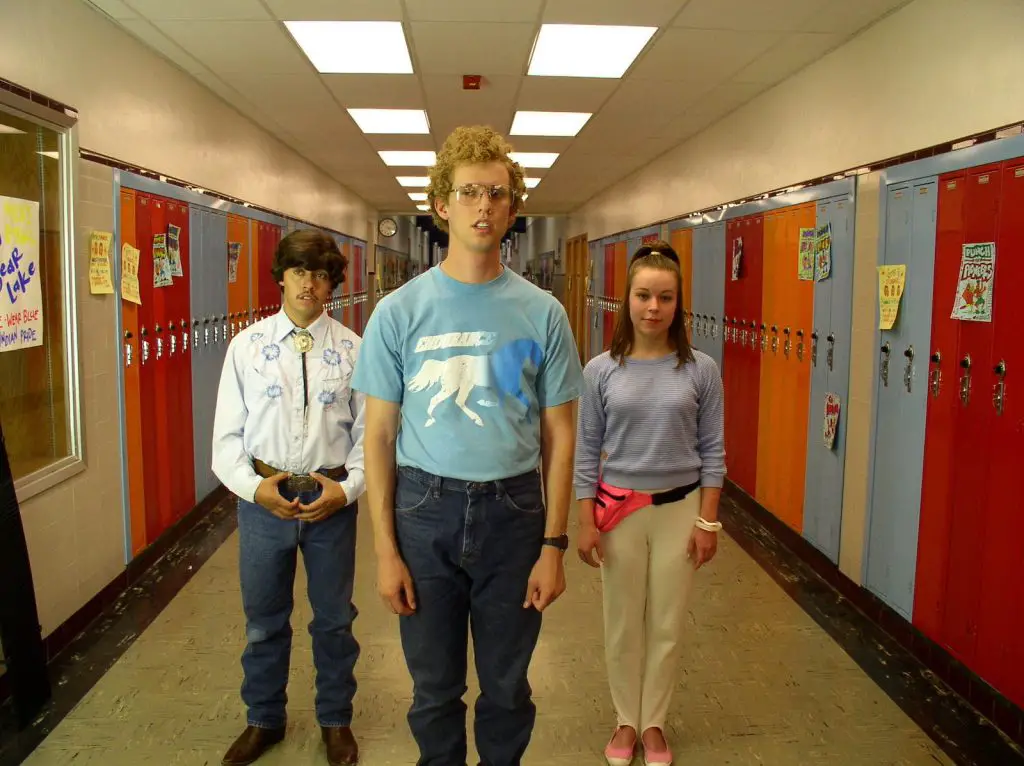
“Everything Put Together” is a dark and disquieting psychological tale about a woman forced into a downward spiral after the death of her first child. Her husband becomes indifferent and neglectful, her friends disown her, and she becomes horrifically insane and emotionally distraught. Directed by Marc Forster as the precursor to the 2001 award winning Monster’s Ball, the film is an exploration of human fallibility and bereavement. Suspenseful and satirical, it approaches a modern day suburban nightmare.
Angie and her husband Ross have a picture perfect suburban life: the big house, the cars, and the social status. Keeping up with the Jones’ is not easy in the family friendly community. Like many of her neighbors and closest friends, Angie is pregnant with her first child. And her relationships and discussions with her friends revolve only around babies – baby showers, birthing classes, morning sickness, and nurseries. While pregnant, Angie visualizes a series of disturbing images. But they are nothing to worry about as her doctor tells her that everything is “perfect.” Yet for some reason, she can’t help feeling worried. And she has reasons for concern. Following the birth of her child, the doctor pulls her husband out of the delivery room to tell him that “his heart just stopped.”
Like thousands of newborn babies, Angie and Ross’ baby fell victim to SIDS (sudden infant death syndrome). Without explanation or reason, the two are in a state of sadness and vulnerability. In particular, Angie goes into a deep depression, insistent on finding a reason for the child’s death and blaming herself. As the two struggle to deal with their loss, the community of friends and family that they had slowly begins to withdraw and turn against them. With little emotion and consolation from her husband, Angie becomes further isolated, venturing into sheer paranoia. Will she find the root cause, will she journey back to recovery, or will her new path lead elsewhere?
Similar to Roman Polanski’s 1968 classic Rosemary’s Baby, a film that defined paranoia and horror around pregnancy, “Everything Put Together” is an unsettling drama about the aftershocks parents go through when their infants suddenly die. Roughly 2,500 infants die each year as a result of SIDS, the parent’s grief unimaginable and the doctor’s response lacking rhyme or reason. There are very few preventative measures parents can take and the end result is a tragedy that impacts everyone involved forever. Ross becomes distant, Angie goes mad, and the neighbors, unsure as to how to deal with the matter, become detached and unsociable. Rather than surrounding the grieving couple with love and concern, the community shuts them out in the hopes that the two can put their lives back together on their own.
Ever so careful, the film unfolds with startling imagery and a creepy tone that resonates with Alfred Hitchcock – that awkward forebodingness. The film was completely shot on digital video, which helps build the suspense and lends a realistic precision to the story. Specifically, each scene is composed in a way that builds a tense curiosity, from the glassy views of Angie and Ross in the kitchen to the sinister shadows in the nursery to the claustrophobic hallways of the storage facility. Even the heart-pumping introduction is prolonged and edgy.
Radha Mitchell is captivating as Angie, a normal woman whose world is shattered following the death of her child. Grasping for some sort of explanation, she turns paranoid and her paranoia escalates into chaos. Mitchell is a scene-stealer, her expressions so unpredictable. The film also benefits from an assorted cast of supporting actors and actresses, familiar to most: Megan Mullally of “Will and Grace,” Catherine Lloyd Burns of “Malcolm in the Middle,” and Alan Ruck from “Ferris Bueller’s Day Off.” Most of the time, I gazed intently at them, wondering if they would break out into their familiar comedic roles. But they didn’t. The voices were different and their roles much more serious.
Forster does a great job of uncovering the flaws of suburbia, the clique like mentality that persists in urban neighborhoods spawning class competition. In the film, the social circumstances surround babies. That is, if you’re not pregnant and don’t have children, you can’t be one of the gang. It’s an all too true social commentary to the extreme. The women are so playful in setting up the nursery in Angie’s house only to snub and discard her after her baby stops breathing.
“Everything Put Together” is an eerie, American nightmare with gritty realism. Unfortunately, it fails to escalate into a full-blown horror, resolving itself breezily. After building up oodles of anxiety and nervousness, the few remaining scenes seem much too normal and dismissive, as if the effects of the child’s death have been forgotten and all the antagonism amongst neighbors has been wiped away. And perhaps that really is the most haunting aspect of the film: a community so brainwashed with their own set of ideals that one horrific event is not enough for anyone to wake up and smell the real world.
